Serotonin and religiosity
Thursday, January 5th, 2006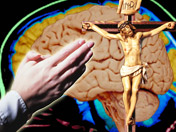 Serotonin receptor density in the brain was tied to religious orientation in a 2003 study by a Swedish team (full report and summary ).
Serotonin receptor density in the brain was tied to religious orientation in a 2003 study by a Swedish team (full report and summary ).
But what is “religious orientation”, and what does low serotonin receptor density mean?
The metric used for “religious orientation” was the so-called “self-transcendence” component of the Temperament & Character Inventory, defined as “the extent to which individuals conceive themselves as integral parts of the universe as a whole.” Self-transcendance breaks down further into subcomponents; it was the “spiritual acceptance” subscale which was found to correlate (negatively) with serotonin receptor density in various brain areas. People with high spiritual acceptance numbers “tend to endorse extrasensory perception and ideation,” while “low scorers…tend to favor a reductionistic and empirical worldview.” The scale includes yes-or-no questions like, “I have had supernatural experiences” and, “I believe in a common, unifying force.”
It’s anybody’s guess what this bizarre scale is actually measuing. I’m imagining people who believe in UFOs and astral flight would probably score pretty high. On the other hand, there is no shortage of reductionist Zen masters who would score zero.
Andy Newberg weighs in with a weird comment which seems to say that we might be able to use these results to decide which religion people should be. Do a prenatal brain scan to decide whether to raise Baby as a Scientologist, Methodist, or Wiccan? He opines that the research “may be useful in a number of ways, including guiding people to practices that might better suit their disposition by understanding how people are spiritually different.”
The study’s author puts a politically correct spin on his results:
Farde also indicated that understanding the role of the brain in religion and spirituality may create more respect for plurality and the way we are religious beings. While the research does not explain whether a person has a belief system, Farde said, it might indicate why the person may be more attuned to a charismatic church as opposed to one with more order and tranquility.
But how might the serotonin system affect spirituality? “My favorite interpretation,” Farde told Psychiatric News, “is that the serotonin system regulates our perception and the variety of stimuli reaching our awareness. A person with a weak ‘sensory filter’ is used to various perceptions and may be more likely to accept religious world views.”
Before we even get there, we have to figure out what low serotonin receptor density means. As the study’s authors themselves point out, we don’t really know. It could mean the person has a fewer number of receptors that are more efficient, or a fewer number of receptors to counteract higher levels of serotonin, or lower serotonin levels. They don’t know.
The most generous thing that can be said about this study is that it “points the way to more study”.

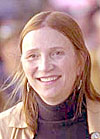 The first event in the California ScienCenter’s “Science Matters” series was
The first event in the California ScienCenter’s “Science Matters” series was 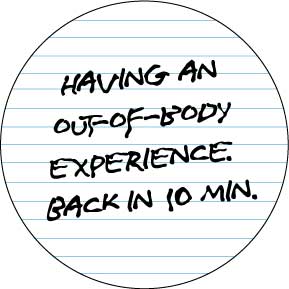 The
The 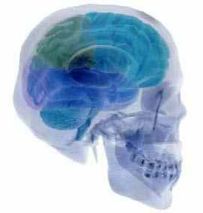 I’ve chosen to celebrate the first anniversary of Numenware—thanks to all my avid readers for their support—with a list of 25 top neurotheology research issues, along with an index to posts that relate to each topic.
I’ve chosen to celebrate the first anniversary of Numenware—thanks to all my avid readers for their support—with a list of 25 top neurotheology research issues, along with an index to posts that relate to each topic. 54% of Americans believe in demons, demonic possession, and exorcisms (
54% of Americans believe in demons, demonic possession, and exorcisms ( In
In  Children respond easily and naturally to the concept of God. They assume his omniscience, for instance, as a matter of course. In one study which asked children what kinds of beings could know everything, specifically what was in a closed box, 5 and 6-year-olds answered that only God and an orange kitty with special vision could. They had already figured out that their mothers did not know everything (which is what the 3 and 4-year-olds had believed). Other studies have shown that children associate God with the creation of natural objects, as opposed to the humans who create artificial objects. Yet additional studies in cultures with a hierarchy of supernatural beings showed the children could order the beings by their power, from God on down to the sun and rocks. Most studies contradict the notion that children build their notions of God as superpowerful versions of their parents.
Children respond easily and naturally to the concept of God. They assume his omniscience, for instance, as a matter of course. In one study which asked children what kinds of beings could know everything, specifically what was in a closed box, 5 and 6-year-olds answered that only God and an orange kitty with special vision could. They had already figured out that their mothers did not know everything (which is what the 3 and 4-year-olds had believed). Other studies have shown that children associate God with the creation of natural objects, as opposed to the humans who create artificial objects. Yet additional studies in cultures with a hierarchy of supernatural beings showed the children could order the beings by their power, from God on down to the sun and rocks. Most studies contradict the notion that children build their notions of God as superpowerful versions of their parents.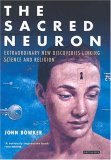 With a title like
With a title like  A friend to whom I was explaining neurotheology asked me what the major competing hypotheses or schools of thoughts were in the field. I think there are two: reductionism vs. holism; and direct vs. indirect instrumentalism.
A friend to whom I was explaining neurotheology asked me what the major competing hypotheses or schools of thoughts were in the field. I think there are two: reductionism vs. holism; and direct vs. indirect instrumentalism. You’ve got neurons all up and down your alimentary canal. They monitor digestion and track enzyme levels. They control peristalsis. They give you that tight feeling in your stomach when you’re scared. And they’re responsible for bringing back up that bad burrito you had.
You’ve got neurons all up and down your alimentary canal. They monitor digestion and track enzyme levels. They control peristalsis. They give you that tight feeling in your stomach when you’re scared. And they’re responsible for bringing back up that bad burrito you had.